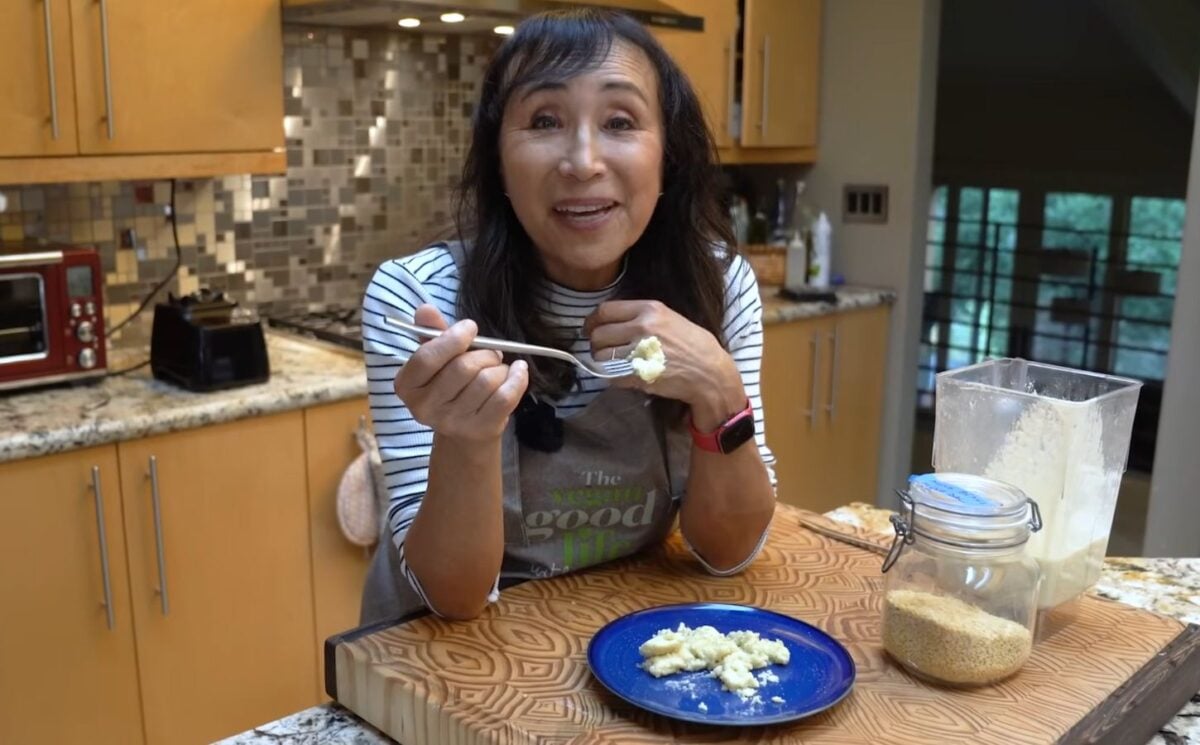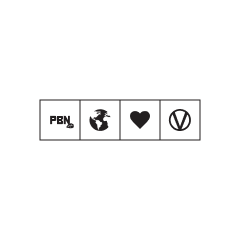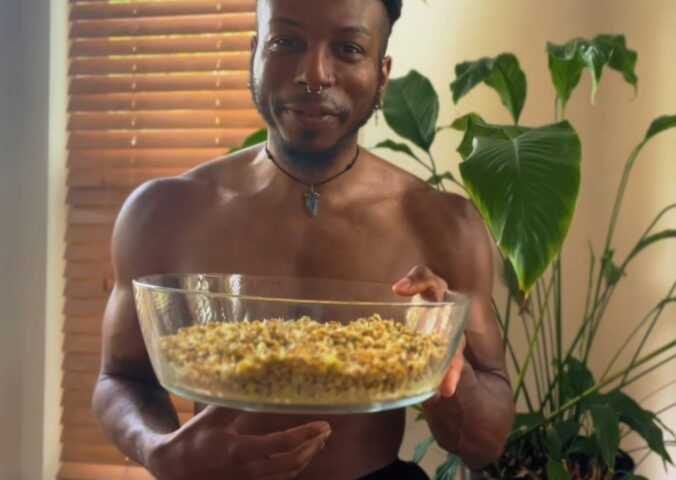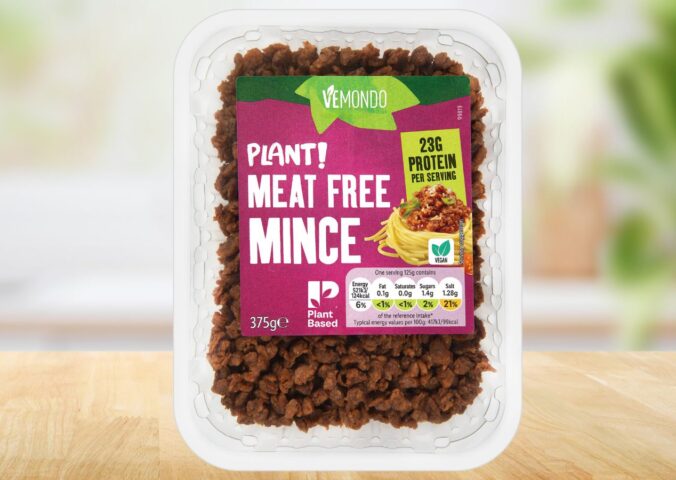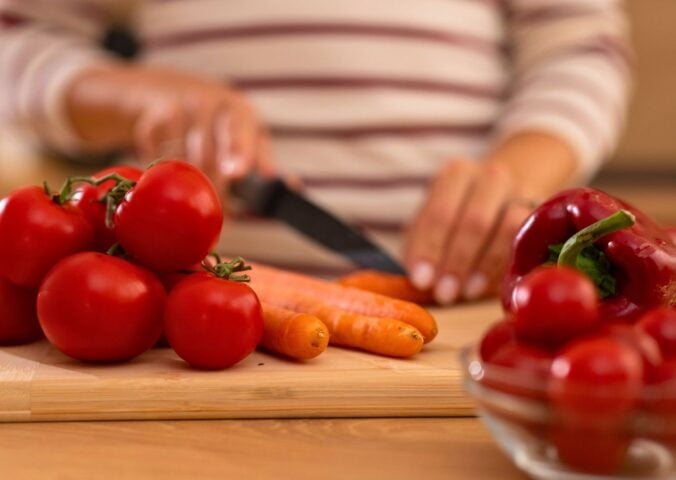If you’re tired of tofu scrambles, Miyoko Schinner is here to help. The renowned vegan chef and founder of Miyoko’s Creamery has been experimenting with a new take on breakfast, one that skips soy entirely and leans into the viral mung bean egg trend instead.
Mung bean “eggs” have been making the rounds online, but Schinner, known for her YouTube channel The Vegan Good Life with Miyoko, is taking it a step further. In her latest video, she shares a method that nails that elusive egg-like bounce and texture without relying on store-bought substitutes or artificial ingredients.
Read more: How to Make Vegan Oyako Donburi (Japanese Chicken and Egg Bowl)
“Mung bean egg is all over the internet and I’ve been playing around with it too,” Schinner says. “Getting that texture for a scrambled egg has been more of a challenge. I think I’m really close so I want to share my journey with you.”
The base: blended, whole mung beans
To start, Schinner uses whole mung bean dal – not soaked, just dry – and blends one cup with three cups of water. “I like to simplify my life,” she explains, skipping the soaking step for convenience.
After blending, she strains the mixture through a nut milk bag to remove the fibrous pulp, which she notes can interfere with the silky texture. “That very starch that it contains can sort of obstruct with a silky texture we’re looking for.”
She also points out that the leftover pulp (which she likens to Japanese okara) doesn’t go to waste – it can be used for baking, vegan meatloaf, or even crabless cakes.
Getting the eggy bounce
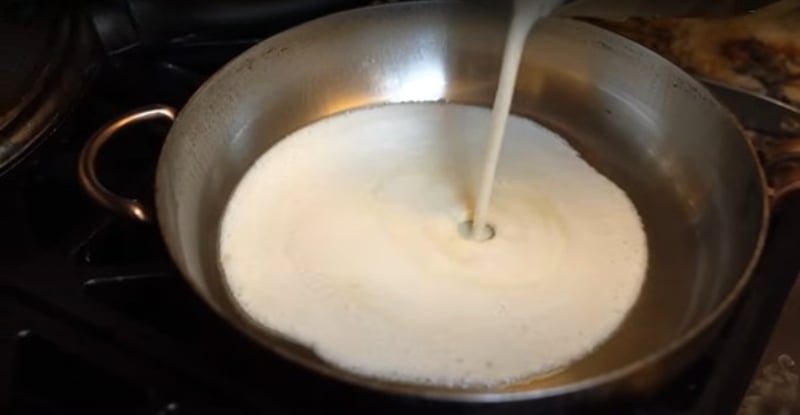
The strained mung bean liquid goes back into the blender. Schinner adds a few tablespoons of nutritional yeast for flavor, and then the real texture magic happens.
To create the bounce and firmness of scrambled eggs, she adds konjac powder – a traditional Japanese ingredient made from the ground root of the konjac plant, often used in shirataki noodles. “It’s an all natural, just ground-up root,” she explains, adding two teaspoons for a soft texture, or up to a tablespoon for firmer results.
Then comes a splash of healthy fat for added richness. “Mung beans have no fat,” she says, adding a few tablespoons of olive oil harvested from her own trees. She says avocado oil is more neutral in flavor, but she’s just in love with her homemade oil.
Cooking: Technique matters
Once blended again, the mixture is ready to cook. Schinner recommends storing it in a jar and shaking well before each use, as it separates easily without emulsifiers. For the scramble, she uses a hot pan with vegan butter to minimize sticking. “Vegan butter…works better than just oil,” she says.
She pours the batter in and waits for it to sizzle. Then, she lets it sit before stirring, allowing it to set. You can add turmeric or more nutritional yeast for color, but she leaves salt out of the blend.
Instead, she finishes with black salt, known for its sulfurous, egg-like aroma. “Heat kills that eggy flavor,” she warns, so it’s best to add it at the end. Schinner cautions that black salt is intensely salty, so it’s best to add a pinch to avoid overseasoning.
As it cools, the mung bean scramble firms up. “It’s during that cooling process that it comes together and solidifies and begins to have that bouncy, firmer texture,” she says.
Served on toast or with sautéed veggies, Schinner says the dish is “like soft scrambled eggs.”
“It’s firm, yummy, and so easy to make,” she declares.
Find more of Schinner’s healthy plant-based recipes on her YouTube channel.
Read more: These 4 Korean-Inspired Longevity Recipes Might Help You Live To 100
